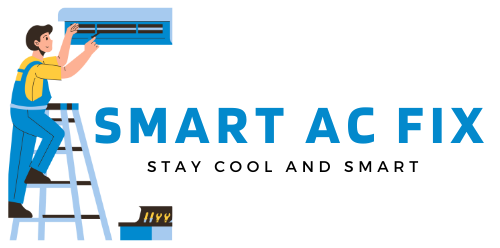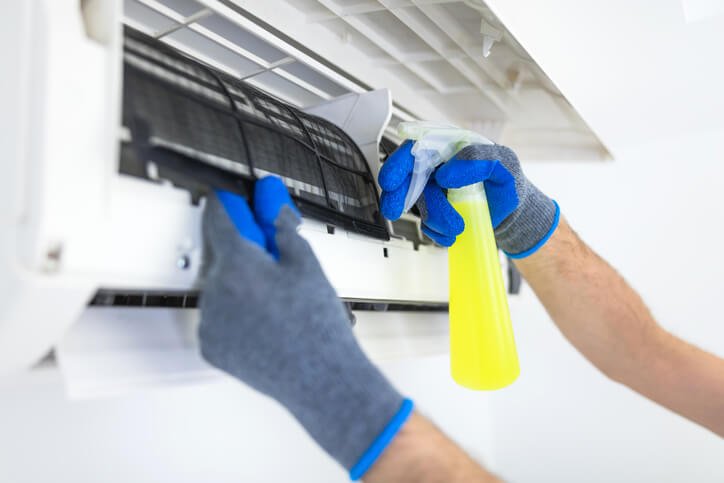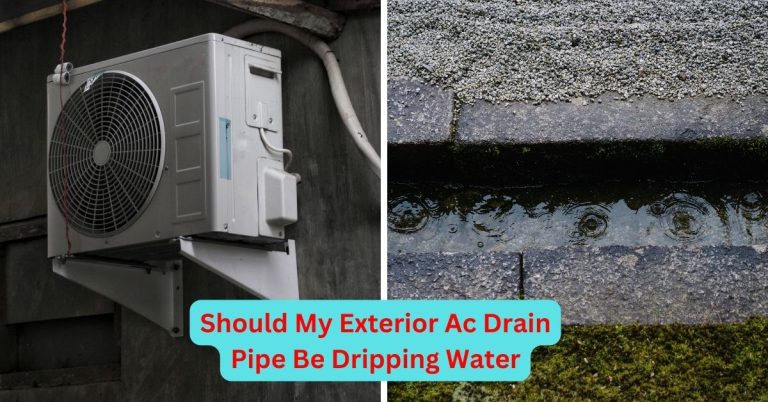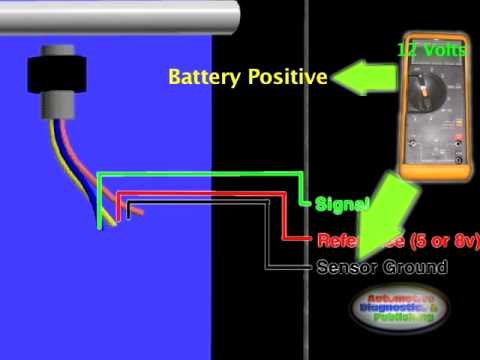Trane Ac Unit Fan Not Spinning? Here’S What You Need To Know
A non-spinning Trane AC unit fan can be caused by various issues including a faulty capacitor, a malfunctioning motor, or a wiring problem. Understanding these common causes can help homeowners troubleshoot and resolve the issue themselves, saving time and money. Regaining the refreshing comfort of a cool home is possible with practical insights and solutions provided in this article.
Imagine coming home on a sweltering summer day, eagerly stepping into your cool sanctuary, only to find that your Trane AC unit fan is not spinning. Panic sets in as you realize the absence of that comforting breeze.
But before calling for professional help, understanding the reasons behind this common issue can save you time, money, and frustration. Your Trane AC unit’s fan plays a critical role in circulating air, ensuring proper cooling, and maintaining overall system performance.
In this article, we will explore the common causes of a non-spinning Trane AC fan, empowering homeowners like you with the knowledge needed to troubleshoot and resolve the issue. Whether it’s a faulty capacitor, a malfunctioning motor, or a simple wiring problem, we will provide practical insights and solutions to keep your Trane AC unit running smoothly. So, if you find yourself facing this dilemma, be prepared to navigate the troubleshooting process like a pro and regain the refreshing comfort you deserve.
I. Common Causes of a Trane AC Unit Fan Not Spinning
A. Power supply issues
1. Tripped circuit breaker
If your Trane AC unit fan is not spinning, one of the common causes could be a power supply issue. Start by checking the circuit breaker for the air conditioner. If the breaker has tripped, it can disrupt the power supply to the fan motor. Resetting the circuit breaker may resolve the issue.
2. Blown fuse
Another power supply issue that can cause the Trane AC unit fan to stop spinning is a blown fuse. Check the fuse box for the air conditioner and inspect the fuse related to the fan motor. If the fuse has blown, it needs to be replaced. Make sure to use the correct amperage fuse to avoid further damage.
B. Faulty fan motor
1. Motor overheating
A faulty fan motor can also be the culprit behind a non-spinning Trane AC unit fan. Overheating of the motor can cause it to shut down as a safety measure. This can happen due to lack of lubrication, excessive dirt or debris in the motor, or a malfunctioning motor capacitor. If the motor has overheated, it may need time to cool down before it can be operational again.
2. Motor capacitor failure
The motor capacitor is responsible for starting the fan motor. If the capacitor fails, the motor may not receive the necessary electrical boost to start spinning. This can result in a non-spinning fan. A faulty motor capacitor will need to be replaced to restore the fan’s functionality.
C. Defective thermostat
1. Incorrect temperature settings
A defective thermostat can also cause the Trane AC unit fan to not spin. Incorrect temperature settings, such as a set temperature below the current room temperature, can prevent the fan from activating. Make sure to set the thermostat at a temperature higher than the current room temperature to trigger the fan operation.
2. Malfunctioning thermostat sensor
The thermostat sensor detects the current temperature and signals the AC unit to activate the fan. If the sensor is faulty or malfunctioning, it may not accurately detect the room temperature, leading to a non-spinning fan. In such cases, the thermostat sensor may need to be repaired or replaced.
D. Blocked or damaged fan blades
1. Debris accumulation
Accumulation of debris, such as dirt, leaves, or other foreign objects, can block the fan blades and prevent them from spinning. Inspect the fan unit and remove any debris that may be obstructing the blades. This can help restore proper airflow and enable the fan to spin.
2. Bent or broken fan blades
If the fan blades are bent or broken, they may not be able to rotate properly. This can result from accidental impact or wear and tear over time. In such cases, the damaged blades will need to be repaired or replaced to restore the fan’s functionality.
II. Troubleshooting Steps for a Trane AC Unit Fan Not Spinning
A. Checking power supply
1. Verifying circuit breaker position
When troubleshooting a non-spinning Trane AC unit fan, start by checking the position of the circuit breaker related to the air conditioner. It should be in the “ON” position. If it has tripped, reset it and monitor if the fan starts spinning again. However, if the breaker trips again, it indicates a more significant issue that requires professional attention.
2. Testing fuse for continuity
An electrical continuity test can be performed on the fuse related to the fan motor to check if it is blown. Use a multimeter set to continuity mode and test the fuse by touching the probes to each end. If the meter displays continuity, the fuse is intact. If there is no continuity, the fuse has blown and needs to be replaced.
B. Inspecting the fan motor
1. Listening for motor humming
Turn on the Trane AC unit and listen for any humming noise coming from the fan motor. If you hear the motor humming but the fan is not spinning, it indicates that the motor is receiving power but unable to start. In such cases, the motor may be jammed or require lubrication. Consult a professional technician to inspect and repair the motor if necessary.
2. Testing motor capacitor with a multimeter
A faulty motor capacitor can also cause the fan motor in a Trane AC unit to not spin. To test the capacitor, use a multimeter set to capacitance mode. Disconnect the capacitor and place the multimeter probes on the corresponding terminals. The multimeter should display a reading within the specified range. If no reading is displayed, the capacitor is faulty and needs to be replaced.
C. Evaluating the thermostat
1. Adjusting temperature settings
Check the temperature settings on the thermostat and ensure they are higher than the current room temperature. If the set temperature is lower, the fan may not activate. Adjust the settings accordingly and monitor if the fan starts spinning. If not, further troubleshooting is required.
2. Testing thermostat sensor accuracy
To test the accuracy of the thermostat sensor, place a thermometer near the thermostat. Compare the temperature displayed on the thermostat with the thermometer reading. If there is a significant difference, the thermostat sensor may be faulty or misaligned. Professional inspection or replacement may be necessary.
D. Inspecting the fan blades
1. Clearing debris around the fan
Inspect the area around the fan blades and clear any debris or obstructions that may be hindering their movement. Use a soft brush or vacuum cleaner to remove dirt, leaves, or any other objects that may have accumulated. Ensuring free airflow around the fan can help restore proper operation.
2. Assessing blade condition for damage
Closely examine the fan blades for any signs of bending, cracking, or breakage. If the blades are damaged, they may not be able to rotate effectively. Bent or broken fan blades should be repaired or replaced to restore the fan’s functionality.
III. Solutions for a Trane AC Unit Fan Not Spinning
A. Resetting the circuit breaker or replacing a blown fuse
1. Proper procedure for resetting a tripped breaker
If the circuit breaker for the Trane AC unit fan has tripped, follow the proper procedure to reset it. Locate the breaker panel and identify the breaker switch associated with the air conditioner. Turn the switch fully to the “OFF” position and then back to the “ON” position. Monitor if the fan starts spinning again. If the breaker trips repeatedly, there may be an underlying issue that requires professional assistance.
2. Steps to replace a blown fuse
If the fuse related to the fan motor has blown, it needs to be replaced. Start by turning off the power supply to the air conditioner. Locate the fuse box and identify the fuse responsible for the fan motor. Remove the blown fuse and replace it with a new one of the same amperage rating. Once the fuse is replaced, restore the power supply and check if the fan starts spinning.
B. Replacing a faulty fan motor
1. Contacting a professional technician for motor replacement
If the fan motor is found to be faulty, it may need to be replaced. It is recommended to contact a professional HVAC technician to inspect the motor and perform the replacement if necessary. They have the expertise and tools required to safely replace the fan motor and ensure proper installation.
2. Cost considerations and warranty options
When replacing a faulty fan motor in a Trane AC unit, consider the cost of the motor itself and the labor involved in the replacement. It is advisable to inquire about warranty options for the motor and the installation. Warranties can provide coverage for potential defects, offering peace of mind and potentially lowering replacement costs.
C. Repairing or replacing a defective thermostat
1. Contacting a professional technician for thermostat repair or replacement
If the thermostat is determined to be defective, it may require repair or replacement. Contacting a professional HVAC technician is recommended for diagnosing the exact issue and performing the necessary repair or replacement. They can ensure proper installation and calibration of the new thermostat.
2. Selecting the appropriate thermostat model for the Trane unit
When replacing a defective thermostat in a Trane AC unit, it is important to select a model that is compatible with the unit. Consult the manufacturer’s specifications or seek guidance from the HVAC technician to ensure the appropriate thermostat model is chosen. Compatibility is crucial to ensure seamless integration and optimal performance.
D. Cleaning or repairing blocked or damaged fan blades
1. Steps for safely cleaning debris around the fan
To clean debris around the fan blades, start by turning off the power supply to the air conditioner. Gently remove any visible debris using a soft brush or vacuum cleaner. Be cautious not to damage the blades or other components while cleaning. Once the debris is cleared, restore the power supply and check if the fan starts spinning.
2. Repairing or replacing bent or broken fan blades
If the fan blades are bent or broken, repair or replacement may be necessary. Bent blades can sometimes be carefully straightened using pliers or a similar tool. However, if the damage is extensive or the blades cannot be repaired, they will need to be replaced. Consult a professional technician to accurately assess and perform the necessary repairs or replacements.
IV. Preventive Maintenance for Avoiding Trane AC Unit Fan Issues
A. Regularly inspecting and cleaning the fan area
1. Monthly visual inspection for debris accumulation
To avoid fan issues in a Trane AC unit, it is important to perform regular visual inspections of the fan area. Check for any debris accumulation on and around the fan blades. If any dirt, leaves, or other objects are found, remove them carefully to prevent obstruction of the fan’s movement.
2. Cleaning the fan blades and housing with a soft brush or vacuum
In addition to visual inspection, periodic cleaning is necessary to maintain optimal fan performance. Use a soft brush or vacuum cleaner to gently clean the fan blades and the surrounding housing. This helps prevent the accumulation of dirt and debris that can obstruct the fan’s movement and impede airflow.
B. Checking and replacing the air filters
1. Frequency of filter inspections and replacements
Regularly checking and replacing the air filters is essential for preventing Trane AC unit fan issues. The frequency of inspections and replacements depends on factors such as air quality, usage, and the type of filter used. Generally, it is recommended to inspect the filters monthly and replace them every three to six months or as needed.
2. Proper installation of new filters
When replacing the air filters, ensure they are properly installed. Follow the manufacturer’s instructions to ensure the filters are aligned correctly and securely in the filter housing. Proper installation ensures effective filtration and unobstructed airflow, which can contribute to the longevity and optimal performance of the Trane AC unit fan.
C. Scheduling professional maintenance and tune-ups
1. Recommended frequency for professional servicing
To prevent fan issues and maintain the overall performance of a Trane AC unit, it is advisable to schedule professional maintenance and tune-ups on a regular basis. The recommended frequency for such servicing is typically once a year. Professional technicians can inspect, clean, and optimize the AC unit, including the fan and its components.
2. Importance of regular maintenance in preventing fan issues
Regular maintenance is crucial for preventing fan issues and ensuring the smooth operation of a Trane AC unit. During maintenance visits, technicians can identify and address potential problems before they escalate, reducing the risk of fan malfunctions. Additionally, regular maintenance helps optimize energy efficiency, extend the lifespan of the unit, and maintain the manufacturer’s warranty.
V. Conclusion
In conclusion, a Trane AC unit fan not spinning can be attributed to various factors, including power supply issues, faulty fan motors, defective thermostats, and blocked or damaged fan blades. By understanding the common causes and following the troubleshooting steps outlined in this article, homeowners can effectively troubleshoot and resolve the issue on their own or seek professional assistance when needed.
AC Fan/Compressor Not Working – How To Test /Repair Broken HVAC Run Start Capacitor Air Condition HD
Frequently Asked Questions (FAQ)
Why is my Trane AC unit fan not spinning?
Can I fix the Trane AC unit fan not spinning issue by myself?
How much does it cost to fix a Trane AC unit fan not spinning?
Is it possible to prevent Trane AC unit fan not spinning issue?
How long does it take to fix a Trane AC unit fan not spinning?
Final Summary: Troubleshooting a Trane AC Unit Fan Not Spinning
In conclusion, a Trane AC unit fan not spinning can be attributed to various factors, including power supply issues, faulty fan motors, defective thermostats, and blocked or damaged fan blades. By understanding the common causes and following the troubleshooting steps outlined in this article, homeowners can effectively troubleshoot and resolve the issue on their own or seek professional assistance when needed.
Power supply issues, such as a tripped circuit breaker or blown fuse, can disrupt the power supply to the fan motor and cause it to stop spinning. Resetting the circuit breaker or replacing the blown fuse can often resolve the issue.
A faulty fan motor can also be the culprit behind a non-spinning fan. Motor overheating or a failed motor capacitor can cause the fan motor to shut down. Allowing the motor to cool down or replacing the motor capacitor may be necessary.
A defective thermostat can prevent the fan from spinning. Incorrect temperature settings or a malfunctioning thermostat sensor can cause this issue. Adjusting the temperature settings or repairing/replacing the thermostat may be required.






